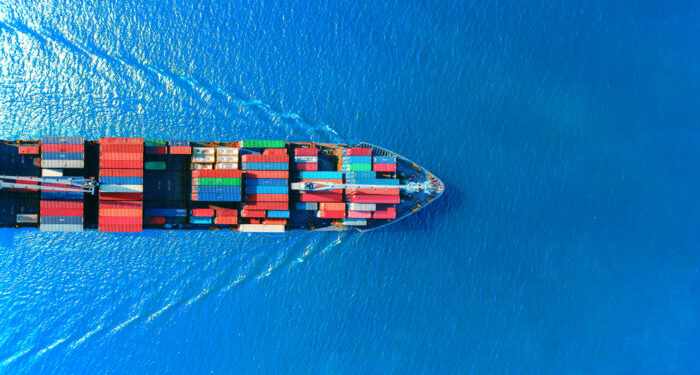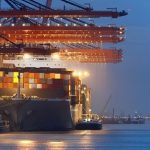The European Union’s Fit for 55 program for shipping has sent a powerful and important signal about the role that national and regional governments can and will play to promote sustainable shipping, even if the International Maritime Organization is the appropriate arena in the long run, Global Maritime Forum Project Director for Decarbonization Jesse Fahnestock said in an interview.
“We expect that other countries will follow suit, though maybe using different tools such as subsidies, contracts for difference and the like,” Fahnestock told S&P Global Commodity Insights, ahead of the Singapore Maritime Week that started April 15.
As far as the EU Emissions Trading System goes, its relevance for decarbonization will, in large part, follow from how well the revenues generated can be put back into future technologies that need first-mover support through, for example, innovation funding, he said.
Finding ways to use that innovation funding to lower the cost of the first generation of vessels and, more importantly, the fuels they use will be key, he added.
Meanwhile, Fahnestock said the policy that could have a bigger role in driving the transition is FuelEU Maritime, which requires the use of alternative fuels.
The “good thing” is that it is making shipowners start to think about how they would develop a fleet strategy under such a policy, which will also be part of the IMO regime to come, Fahnestock added. However, he opined that the FEUM was not stringent enough to force companies to adopt new fuels and engines.
“There may be other reasons for them to do so, anyway, but in its current design, FEUM doesn’t create a huge incentive to use, for example, green methanol or green ammonia,” he said.
The IMO’s 2030 targets are also looming. They are “hard-headed and realistic” because the IMO strategy, essentially, requires the industry to have the new fuels and technologies at a level of maturity so they can start to be adopted everywhere after 2030, he added.
“If we don’t reach them, the work that follows 2030 will be even more difficult and much more costly,” Fahnestock cautioned.
“We think the key elements are an ambitious fuels standard on a well-to-wake basis, a separate GHG [greenhouse gas] levy and an approach to revenue distribution that stimulates the uptake of scalable zero-emission fuels while also supporting a just and equitable transition,” he said.
Opting for greener fuels
“If the industry is going to deliver on the steep transition implied by the revised strategy, we will need fuels that can be produced at a huge scale and with nearly zero GHG emissions on a life-cycle basis,” Fahnestock said.
The only options capable of doing that in the time frame necessary appear to be fuels that use green hydrogen as a feedstock, such as e-methanol and e-ammonia, he added.
Using hydrogen directly as a fuel could be an option for some segments, but the economics are challenging for deepsea shipping, Fahnestock noted.
Green shipping corridors would also help to demonstrate and scale up the new hydrogen-based fuels and their infrastructure, he said.
However, initiatives such as green corridors would need a few years to develop strategies, plans, investments and commercial models for these new solutions before deploying them, he added.
Fahnestock also said that, amid the gamut of alternative fuels, he did not see LNG as a relevant transition fuel.
“LNG may have other benefits, but in terms of greenhouse gases, it is unlikely to play a meaningful role in the transition. There is some doubt as to whether it provides any reduction at all on a lifecycle basis, and it doesn’t really lay the foundation for the fuels that will be needed in the future,” Fahnestock added.
According to analysts referencing S&P Global’s scenario, overall bunker fuel demand is projected to reach 328 million mt by 2030. Of this, LNG is expected to account for 7.8% of the total bunker fuel consumption mix, while alternative fuels excluding LNG and LPG will likely have about 2.2% share. Of this, methanol is anticipated to account for 34.3%, ammonia 14.7% and hydrogen 16.8%.
Boosting industry ambition, preparedness
“Our flagship initiative on decarbonization remains the Getting to Zero Coalition, and it continues to work in the same way — boosting industry ambition and first-mover action,” Fahnestock said, noting that the major priority of the coalition was that mid-term measures under development deliver on the revised strategy adopted last year.
“We also continue to work with first movers in the industry and first-mover governments, including on green corridor initiatives and operational efficiency, to deliver the early action and generate the learnings that will be needed to ensure a full, just and equitable transition in the long term,” Fahnestock added.
The forum has also helped to promote transparency on shipping’s emissions via the Sea Cargo Charter, the Poseidon Principles and the Poseidon Principles for Marine Insurance, he said, adding that the SCC has expanded its scope and will now allow shipowners to join the initiative alongside charterers.
When it came to the Poseidon Principles, the very quick decision in 2023 to begin reporting against the revised greenhouse gas strategy indicates that the principles are determined to stay relevant and at the forefront of the transition, Fahnestock said. But the key is staying true to those founding principles — assessment, accountability, enforcement, and transparency — he added.
Source: Hellenic Shipping News






